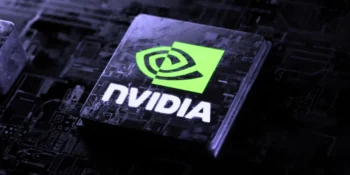In an era of technological advancements and the imperative to address climate change, transforming our energy infrastructure has become a pressing necessity. Smart grid technologies have emerged as a pivotal solution, promising a more efficient, reliable, and sustainable energy system. As we stand at the intersection of innovation and environmental stewardship, embracing smart grid technologies is not just a choice—it’s a strategic imperative for building a resilient and sustainable energy future.
The Evolution of Energy Infrastructure: Enter the Smart Grid
Traditional energy grids, characterized by one-way flows of electricity, lack the flexibility and efficiency required for the demands of the modern world. Enter the smart grid—an intelligent and interconnected network that integrates advanced sensing, communication, and control technologies to optimize electricity generation, distribution, and consumption.
Smart grid technologies enable real-time monitoring, data analysis, and decision-making, revolutionizing how we generate, distribute, and consume energy. They empower consumers, enhance grid resilience, and pave the way for integrating renewable energy sources.
Empowering Energy Consumers: From Passive to Active Participants
The shift towards smart grids empowers energy consumers to participate actively in the energy ecosystem. Smart meters and real-time energy consumption data enable consumers to make informed choices about when and how they use energy, ultimately reducing their bills and carbon footprints.
Demand response programs, enabled by smart grid technologies, allow utilities to communicate with consumers during peak demand periods, incentivizing them to reduce energy usage. This dynamic interaction between consumers and utilities enhances energy efficiency and grid stability, all while reducing strain on the system during periods of high demand.
Enhancing Grid Resilience: Navigating Disruptions
The ability of the energy grid to withstand and recover from disruptions is a critical concern. Smart grid technologies enhance grid resilience by providing real-time data on grid conditions and enabling rapid response to outages.
Microgrids, a component of the smart grid concept, are localized energy systems that can operate independently from the main grid. During disasters or grid failures, microgrids can continue to deliver power to critical infrastructure, such as hospitals, emergency centers, and communities, enhancing overall resilience and disaster preparedness.
Integrating Renewable Energy: A Greener Horizon
Integrating renewable energy sources, such as solar and wind, into the energy grid presents challenges due to their intermittent nature. Smart grid technologies address these challenges by optimizing the use of renewable energy and balancing supply and demand in real time.
Smart grids enable utilities to forecast renewable energy production and adjust grid operations accordingly. Energy storage systems, which play a crucial role in renewable integration, can store excess energy generated during peak times and release it during periods of high demand, ensuring a stable and reliable energy supply.
Data Analytics and Machine Learning: Informed Decision-Making
At the heart of smart grid technologies lies data analytics and machine learning. These technologies enable utilities to analyze data collected from sensors, meters, and other devices. Utilities can make informed decisions that optimize energy distribution, prevent outages, and improve system efficiency by uncovering patterns, trends, and anomalies.
Machine learning algorithms can predict energy demand, identify potential equipment failures, and even optimize the charging of electric vehicles to minimize strain on the grid. These predictive capabilities enhance the reliability and performance of the energy system.
Security and Privacy: Safeguarding the Future
As smart grid technologies become more interconnected and reliant on data exchange, cybersecurity and data privacy concerns have grown. Protecting the smart grid from cyber threats is paramount to ensuring the security and reliability of the energy system.
Advanced encryption methods, robust authentication protocols, and continuous monitoring are essential to safeguarding smart grid infrastructure. In addition, ensuring data privacy and giving consumers control over their energy data is crucial to building trust and fostering widespread adoption of smart grid technologies.
Collaboration and Policy Support: A Unified Approach
The successful adoption and implementation of smart grid technologies require collaboration among governments, industries, utilities, researchers, and communities. Governments play a pivotal role in creating supportive policies and regulations that encourage investment in smart grid infrastructure.
Incentives for utilities to invest in smart grid technologies and regulations that promote data security and privacy are critical to driving the transition. Public-private partnerships can accelerate research, development, and deployment, ensuring that smart grid technologies are accessible to all sectors of society.
Conclusion
Integrating smart grid technologies into our energy infrastructure is not just an evolution—it’s a revolution that can transform how we generate, distribute, and consume energy. We illuminate a path toward a more sustainable and resilient energy future by embracing real-time data, advanced analytics, and interconnected systems.
Smart grid technologies empower us to take charge of our energy consumption, reduce our carbon footprint, and enhance the reliability of our energy systems. As we navigate the challenges of climate change, resource constraints, and evolving energy demands, smart grid technologies offer a beacon of hope—a way to build a future where energy is smart, efficient, and sustainable.
Ultimately, our choices today will shape tomorrow’s energy landscape. By investing in smart grid technologies and fostering collaboration among stakeholders, we lay the foundation for a brighter, more sustainable energy future. In this future, innovation, resilience, and environmental stewardship will guide us towards a world powered by intelligence and ingenuity.










